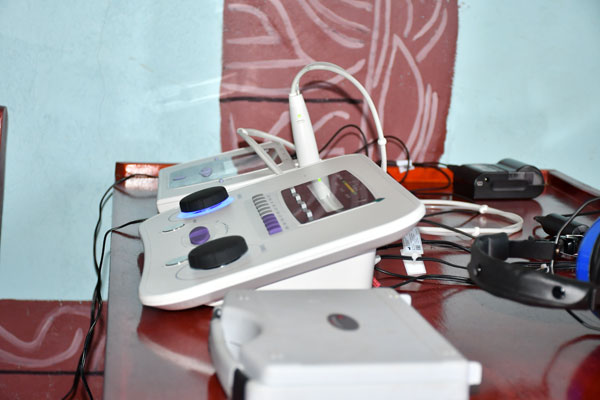By Okello Jesus Ojara, Gulu Uganda
More than 5 per cent of the world’s 7 billion population – or 430 million people require rehabilitation to address their ‘disabling’ hearing loss (432 million adults and 34 million children).
It is estimated that by 2050, more than 700 million people – or one in every 10 people will have disabling hearing loss.
In Uganda, an estimated 2 million Ugandans are living with permanent hearing loss or some kind of impairment. Studies conducted within the country have found road accidents as one of the major causes of injury to the ear. And, as the world deals with the socio-economic impact of the “silent pandemic”, there is hope, especially with the acquisition and installation of the new ultramodern ear-testing equipment at St Philip Health Centre III at Michan Village, Bardege-Layibi Division in Gulu City.
The machine, which cost approximately Shs110 million, can provide services such as ear checkups, hearing aids programming and fitting, hearing aid repair and maintenance, as well as audio -speech therapy for people with cochlear implants.
This machine is the only operating ear-treatment equipment in the sub region after the one recently installed at government Gulu Regional Referral Hospital broke down.
According to Dr Isaac Ojok, an audiologist at the facility noted that sampled 250 students in two schools in Gulu City alone discovered that up to 55 of them had defects in their ears that required treatment and corrections, and this number would make you wonder about the situation among adults.
Dr Ojok called upon individuals with hearing problems, organizations and bodies that work with children such as schools and other institutions to prioritize ear checkups and testing.
“The Centre has acquired ultramodern ear testing equipment which is among some of the best in the industry. Now that the Centre is fully-equipped, we will be able to identify, diagnose, and rehabilitate hearing problems,” Dr Ojok said.
According to Ojok, hearing defects are a significant problem in Northern Uganda and yet remain untackled by health facilities and stakeholders.
Dr Julius Omoding, an ENT (Ear, Nose and Throat) specialist disclosed that causes of hearing impairment can be divided into congenital and acquired causes.
He says congenital causes may lead to hearing loss being present at or acquired soon after birth and hearing loss can be caused by genetic factors or complications during pregnancy and childbirth.
Dr Josephine Likichoru, an audiologist says some children are born with under-developed ears, especially premature babies. Even head injury, or lack of oxygen to the brain can cause hearing impairment.
On the other hand, acquired causes may lead to hearing loss at any age. Such causes include infectious diseases such as meningitis, measles and mumps; chronic ear infections and use of certain drugs that damage the inner ear such as some antibiotics and anti-malarial.
Other causes are continuous exposure to excessive noise, which damages the delicate hair cells in the inner ear. This damage often results in permanent hearing loss and tinnitus (ringing in ears).
She however disclosed that the treatment of hearing impairment is prescribed depending on the type and cause. If the cause is an infection, the patient is put on antibiotics and it clears.
She adds that if the patient has mild hearing loss, he or she is given a hearing aid to amplify the sound and enable him or her to hear properly.
In addition, advances in signal processing and other technologies, improvements in battery capabilities, and the advent of wireless access have made it possible for hearing aids to include telecoils (for coupling with compatible electronic products), directional microphones, noise reduction circuitry, direct audio input and processing algorithms that are intended to minimize background noise and maximize conversational sound, and capabilities for wireless signal reception for interactions with televisions, phones, computers and tablets, and other communication and hearing assistive technologies.
The extent to which these components (and other innovations) are included in specific hearing aid products varies across the range of basic to premium level aids. Upgrades and variations include the extent and nature of Bluetooth capability, the inclusion of a telecoil, the number of channels, automatic switching among programs, feedback reduction, and smartphone applications to program or personalize the device Consumer Reports, 2015; HLAA, 2016; Mamo et al., 2016; McCormack and Fortnum, 2013.





